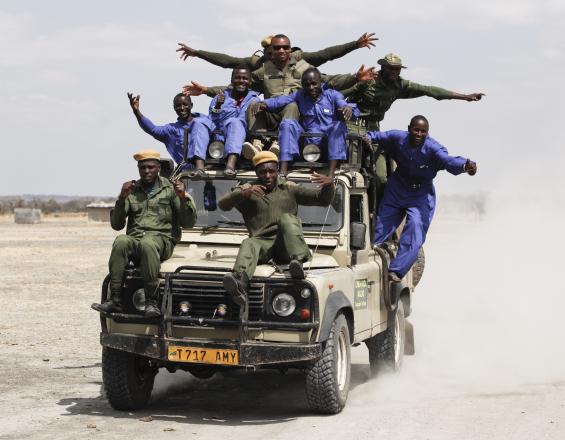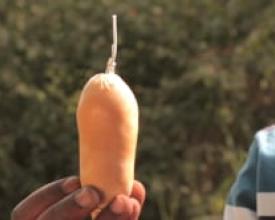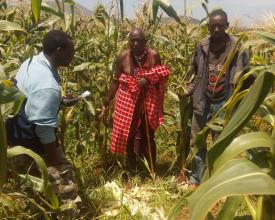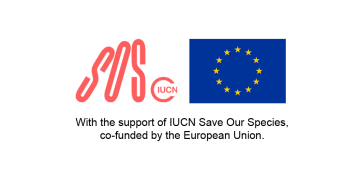
Community Led Conservation

The Randilen Wildlife Management Area (RWMA) in northern Tanzania, bordering the Tarangire-Manyara ecosystem, serves as a critical habitat for numerous threatened species such as African elephants and lions. Protecting the RWMA allows the local community to benefit from tourism-related income from the area's business ventures.
During a survey, the Randilen community highlighted human-wildlife conflict as a significant challenge. To address this, the project provided training and introduced an innovative toolkit designed to deter crop raiders, such as elephants.
As a result of the project, there was a substantial reduction in retaliatory killings, as farmers could effectively protect their crops using the innovative Honeyguide toolkit. The innovative tool has proven to be 90% effective in safeguarding crops, contributing to improved coexistence between humans and wildlife.
This project is part of the IUCN Save Our Species African Wildlife initiative, co-funded by the European Union.
Context
Challenges addressed
- During the project implementation, we were importing torches from China, so they stopped making the LED torches.
- The COVID-19 pandemic led to zero income for the Protected Area
- Increase of crop raiding incidences
Location
Process
Summary of the process
Building the capacity of local communities was a crucial component of the project. Refresher training sessions were conducted to systematically enhance their skills in using the toolkit, enabling them to effectively respond to mitigation incidents.
The community uses funding earned from wildlife management area businesses to purchase of the tools, demonstrating their commitment to tackling the challenge of crop loss
Building Blocks
Methodology
- Involvement of the local community
- Responding to community needs
Enabling factors
The openness of the community to learn and adopt the toolkit.
The financial support for the project.
The effectiveness of the toolkit in deterring the wildlife from farms.
Livelihood Improved
Randilen Wildlife Management Area (WMA) generates tourism income that directly supports community development, fostering sustainable growth and improving local livelihoods. Revenue from tourism activities, such as park entry fees, guided tours, and eco-lodges, is reinvested in key sectors like education, healthcare, and infrastructure. Additionally, these funds empower local communities by creating jobs, enhancing conservation efforts, and supporting small businesses. The income also contributes to cultural preservation and environmental sustainability, ensuring long-term economic stability while promoting responsible tourism practices that benefit both people and wildlife.
Enabling factors
Protection of wildlife and the environment
Capacity Building for Governance Improvement
Tailored governance training provided WMA leaders practical conflict resolution skills and financial oversight capabilities. This empowered them to address governance challenges internally and create a sustainable operational framework.
Enabling factors
- Training facilitation by experienced consultants with local contextual knowledge.
- Ongoing coaching to reinforce skills and promote governance best practices.
Lesson learned
- Training is the most effective when coupled with follow-up support to address emerging issues.
- Stakeholder-driven self-assessments yield targeted capacity-building interventions.
Impacts
The project has positively impacted the local community by enhancing their understanding of the importance of protecting wildlife management areas (WMAs). The WMA with the support of Honeyguide provided tools to mitigate human-wildlife conflict, significantly reducing retaliatory killings. This has helped preserve wildlife for tourism, generating income and improving livelihoods.
Social Impact
The project improved the community’s understanding of the value of WMAs and the benefits of protected areas. Local residents actively participate in wildlife conservation by informing rangers about farm invasions and illegal activities. This has raised awareness and built the community's capacity to manage and sustain their projects.
Ecological Impact
Ecologically, the project has had a positive effect on the ecosystem. With reduced retaliatory killings, the wildlife population is stabilizing, and the 312 km² of protected areas now serve as a vital grass bank for livestock from the eight-member villages.
Financial Impact
By reducing retaliatory killings and maintaining a stable ecosystem, the area has seen an increase in income from photographic tourism. This financial boost benefits the local community, further incentivizing wildlife conservation.
Beneficiaries
Local community




